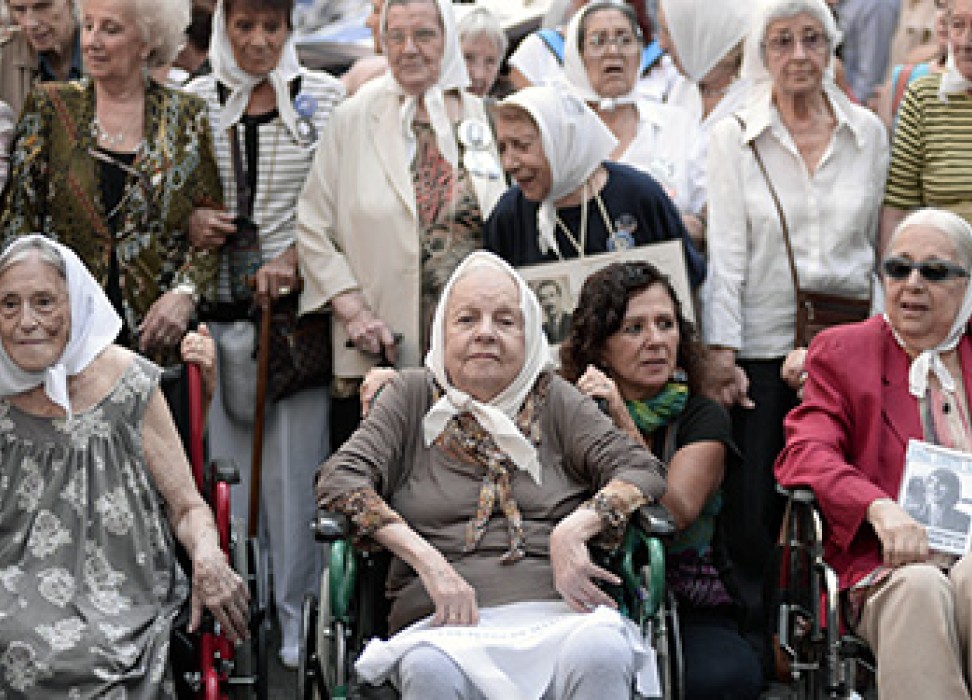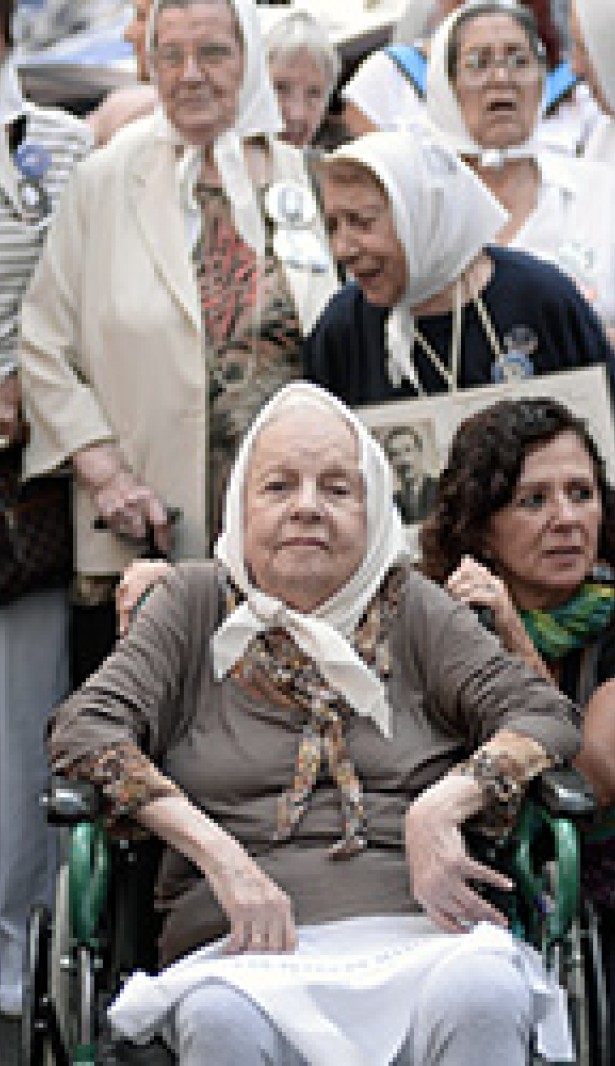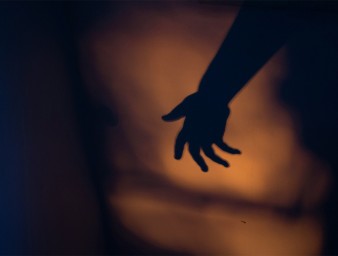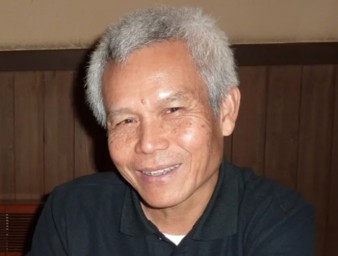Recovered identity: a reunion mends years of pain in Argentina
26 April 2016

Before he was even born, Guillermo’s parents were forcibly disappeared during Argentina’s military dictatorship, grim facts he was unaware of during his childhood and adolescence years.
“As an adult, I began to have suspicions about my birth and about the man and woman who said they were my parents,” says Guillermo.
The civil society organization, Abuelas de Plaza de Mayo (Grandmothers of the Plaza de Mayo), has been searching for grandchildren like Guillermo to reunite them with their families since 1977.
During Agentina’s military dictatorship from 1976 to 1983, enforced disappearances amounted to psychological torture for the families of those who did not know where their missing loved ones were, alive or dead.
So far, Abuelas de Plaza de Mayo, supported by the United Nations Voluntary Fund for Victims of Torture (UNVFVT) since 1990, has reunited 119 grandchildren with their families. Funding supports genetic testing to make the best use of a DNA bank, established in 1987 after Argentina’s return to democracy to help identify the grandchildren stolen during the dictatorship as part of the crack-down against young opponents to the dictatorship.
“The military often did not execute pregnant women – they were kept in Campo de Mayo, a clandestine military detention centre that became infamous as a place where newborn babies were confiscated and then ‘disappeared’ through illegal adoptions,” says Guillermo.
“In 2007, while watching Televisión por la Identidad, a TV show based on Abuelas’ search to reunite children with their families using DNA testing, I heard one case that I just knew had to be about me,” he continues. “I started crying and my girlfriend convinced me to go to the National Commission for the Right to Identity (CONADI).”
Guillermo’s story is just one of nine featured in a new publication, From Horror to Healing: A life-saving journey supported by the UN Fund for Victims of Torture.
UNVFVT is managed by the UN Human Rights Office in Geneva, Switzerland and marks its 35th anniversary this year.
The publication provides a candid lens on the experiences of both victims of torture and the practitioners who help them reclaim dignity and seek rehabilitation, truth and redress– a path that can often last for many years. The stories were gathered from organizations supported by UNFVT, which in turn give direct medical, psychological, social and legal rehabilitation services to around 50,000 victims of torture and their family members each year.
In December 2007, Guillermo went to the National DNA Bank (BNDG). But quick answers were not forthcoming. Four months later he was told that his genetic profile did not match any family groups stored by the bank. Then, in 2009, CONADI called him in for an emotional meeting with its Director.
“With her eyes full of tears, she told me the story of my family,” says Guillermo.
“It took two years to confirm my identity because no one had known my mother was pregnant when she was arrested along with my father on 17 October 1979. So her family had not deposited her DNA. However, a survivor came forward to say my mum did give birth in detention. So they requested blood samples from my parents’ brothers and sisters – my uncles and aunts – and they could confirm that I was the son of Marcela Molfino and Guillermo Amarilla.”
Guillermo’s parents had been married in 1973 and had three children before being arrested.
“This is how I got to know, at the age of 29, that I had three brothers and a big family. We all met for the first time on the premises of Abuelas. It was a big hug and I understood that was a hug that would last forever.”
Since 1981, the UNVFVT, which is managed by the UN Human Rights Office in Geneva, has channelled over US$168 million into more than 630 organizations giving direct medical, psychological, social and legal assistance to torture victims.
26 April 2016




